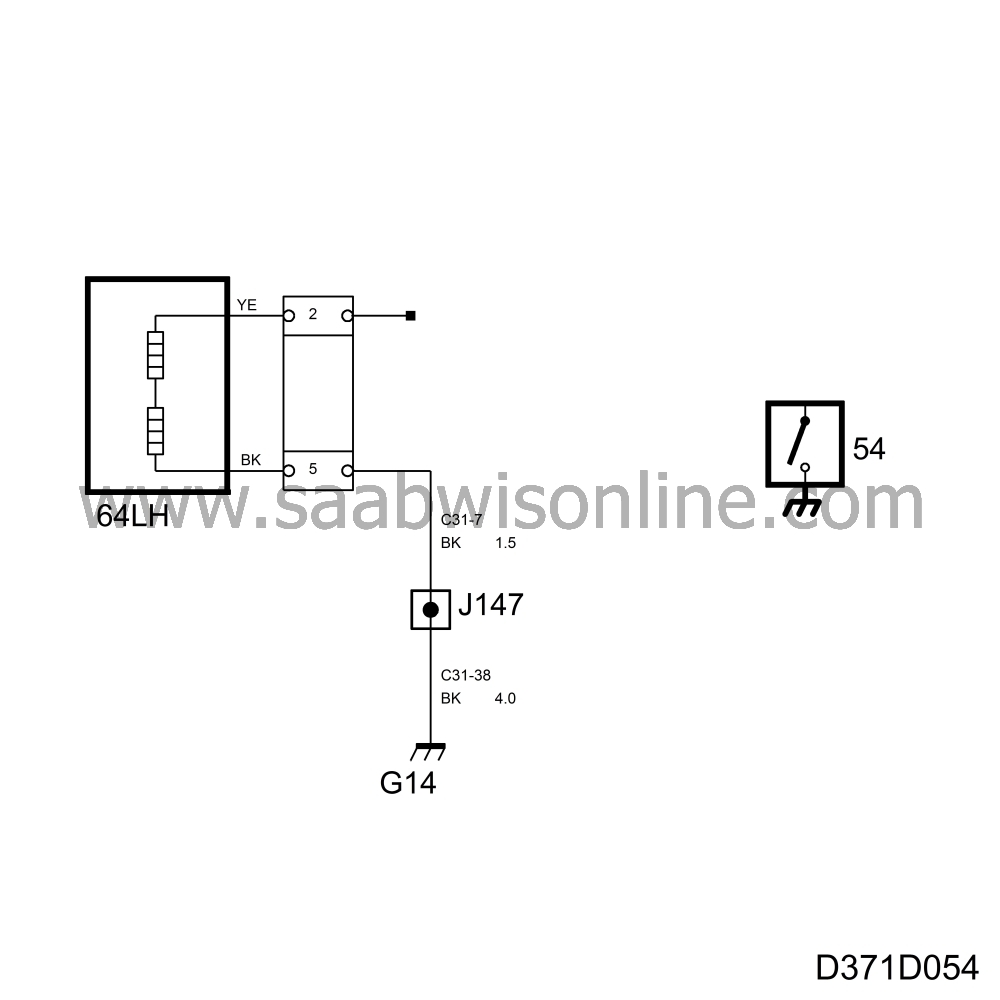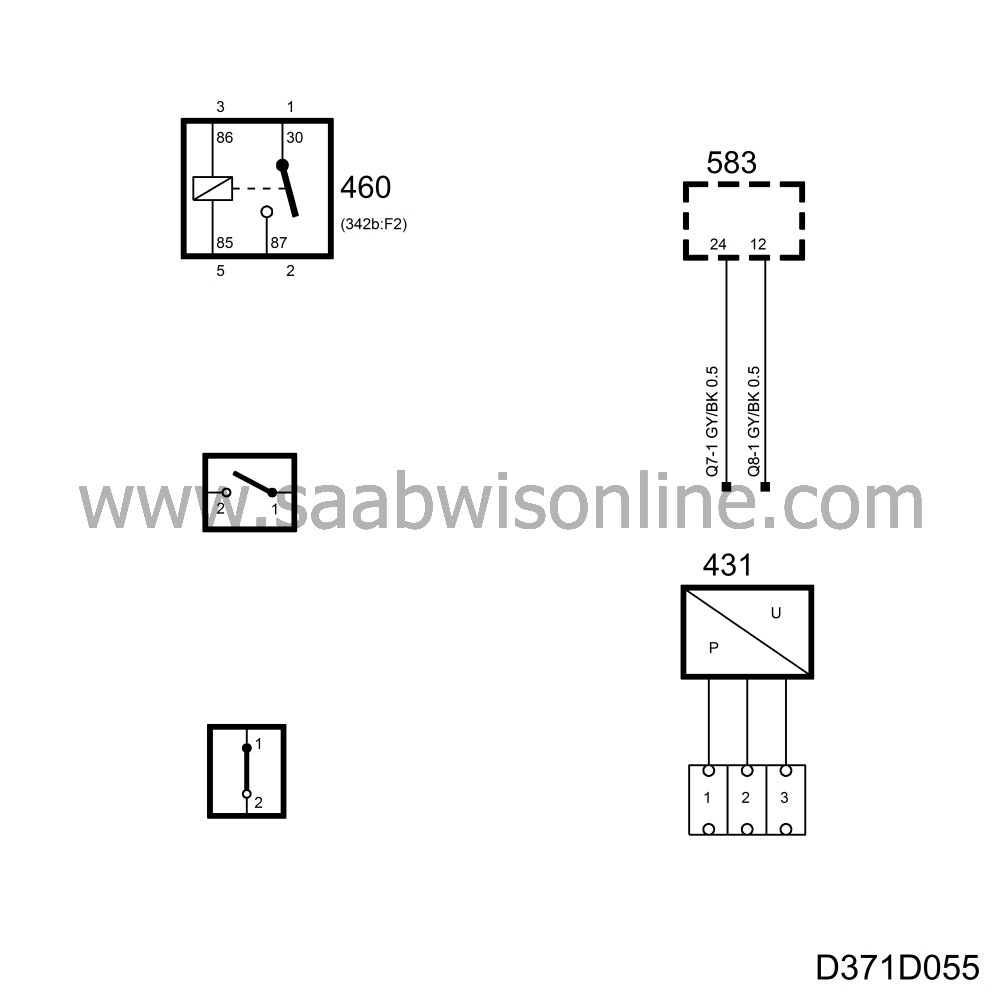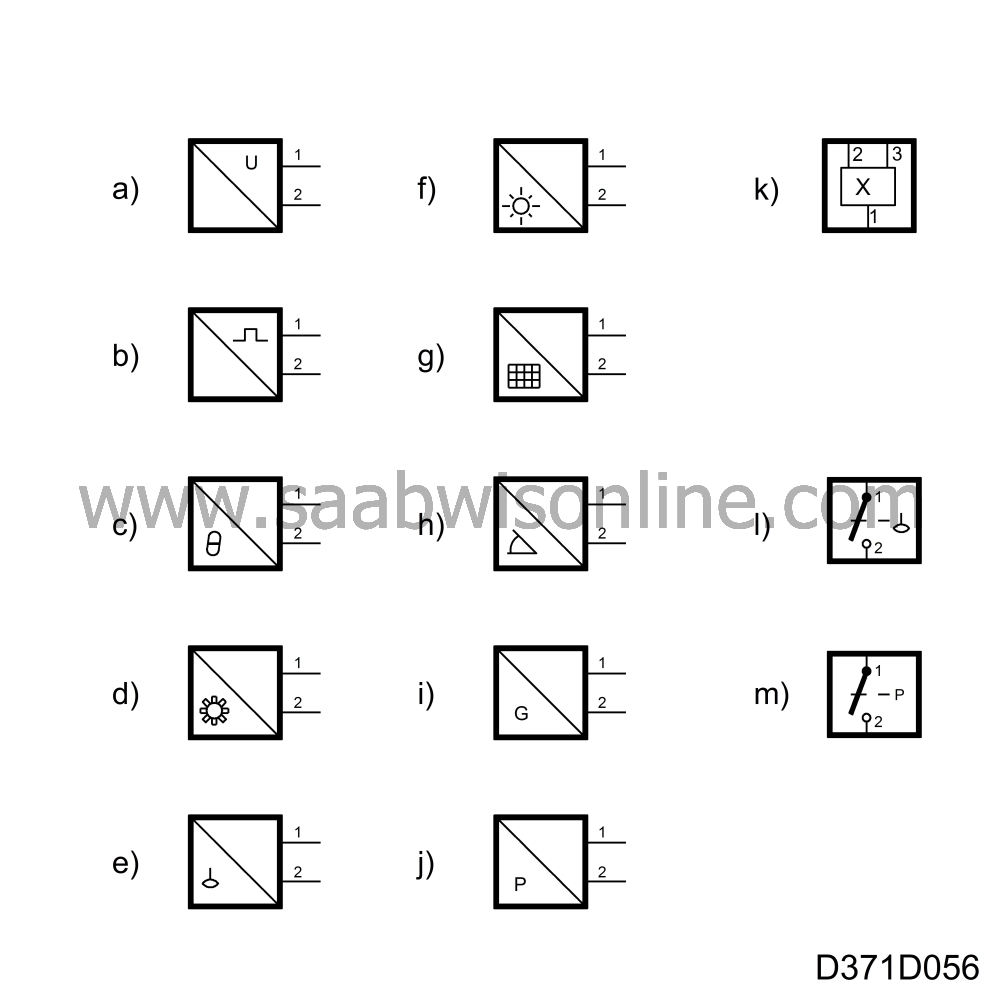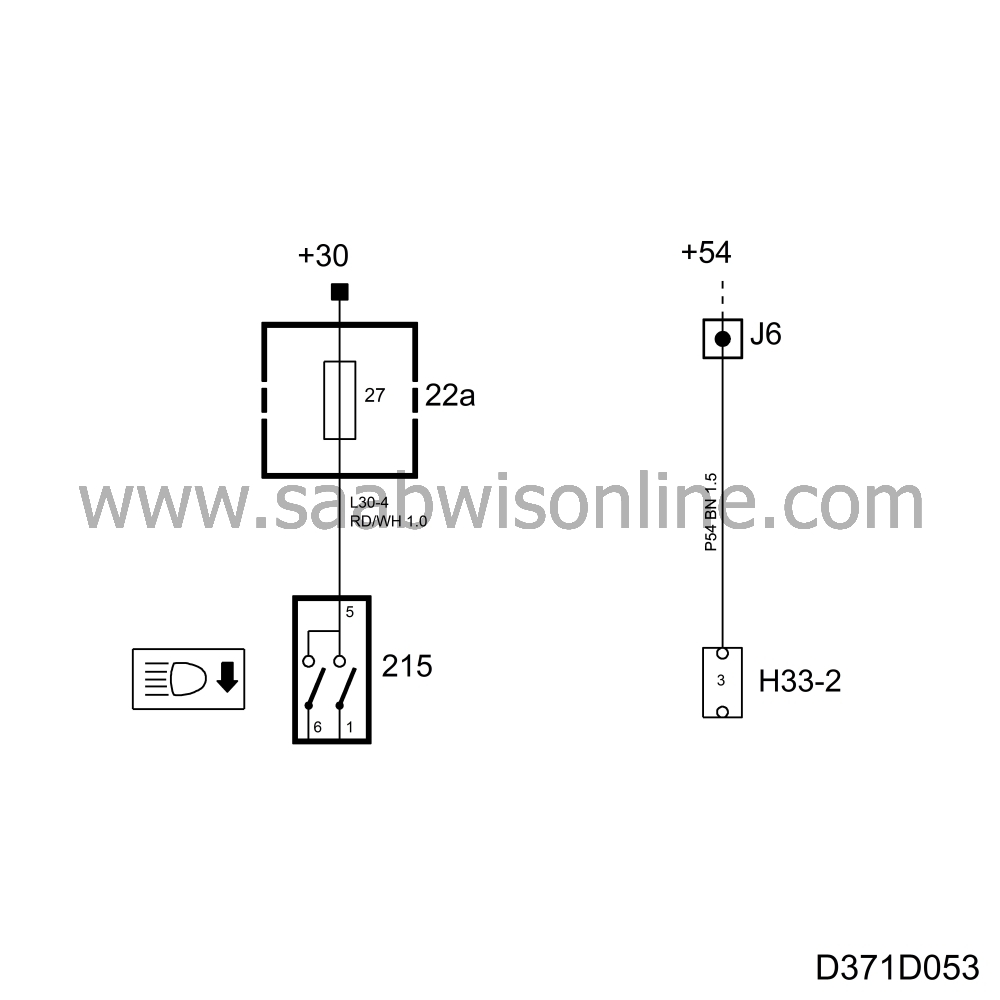Symbols used in the wiring diagrams
| Symbols used in the wiring diagrams |
The power supply to each fuse is illustrated separately in the system group for the positive supply in which the main fuse box, ignition switch, etc. are covered.
Example:
The supply to a fuse comes from the +30 terminal block and can be seen up to the fuse in question in the section "Voltage +30"
| Grounding points |

Most of the grounding points in the car have a component number consisting of a letter and a serial number, e.g. G14. The location of the different grounding points in the car can be found in the sections "Grounding points" and "Grounding point locations".
Certain components are grounded directly to the body, e.g. the door switches. These ground connections are indicated by a thicker line than normal connections to the grounding point.
| Switches, relays and components |

Unless otherwise indicated, switches and relays are shown in their inactivated and unenergized state.
The locations of the relays are given in brackets below the component number.
When the box around the component is drawn with a solid line, the whole component is shown.
When the box around the component is drawn with a broken line, only part of the component is shown.
On some components having a hanging lead, the connector has not been given a separate H number to show that it is part of the component.
The components are designated by a serial number and one or more supplementary letters, which indicates their location or type. The location is indicated by capital letters, e.g. 298FL, while the type is indicated by lower case letters, e.g. 47a. The following abbreviations are used to indicate position:
|
C
|
=
C
entre
|
|
D
|
=
D
river's side
|
|
F
|
=
F
ront
|
|
H
|
= boot lid/tailgate (
H
atch)
|
|
P
|
=
P
assenger side
|
|
R
|
=
R
ear
|
|
LH
|
=
L
eft
H
and
|
|
RH
|
=
R
ight
H
and
|
| Sensors and monitors |

The component symbols for sensor and monitors have been simplified. The connecting side/output of the sensor has been given an internal symbol indicating the type of the output signal and a symbol for the type of quantity.
All internal symbols may be used with other components.
| a. |
Sensor output with continuous voltage
|
|
| b. |
Sensor output with pulse voltage, e.g. frequency or PWM
The outputs are combined with the following quantity symbols to indicate the correct type of sensor: |
|
| c. |
Temperature
|
|
| d. |
Speed/rpm via a toothed wheel or similar
|
|
| e. |
Level
|
|
| f. |
Sun
|
|
| g. |
Load
|
|
| h. |
Angle
|
|
| i. |
Acceleration
|
|
| j. |
Pressure
One type of sensor that can be used for different purposes is: |
|
| k. |
Hall sensor
A monitor is shown as a switch with type of quantity: |
|
| l. |
Level switch
|
|
| m. |
Pressure switch
|
|
| Crimped connections |
To reduce the number of connectors used in the car, several crimped connections are incorporated in the wiring. They occur as fixed wiring connections and also as connectors.
The crimp connectors immediately above the grounding points have been ultrasonic welded for reliability.
The number of pins in a connector can vary depending on the market and car variant. There is a metal tab at the top of the connector that connects the incoming pins. There is no pin numbering on the connectors.



